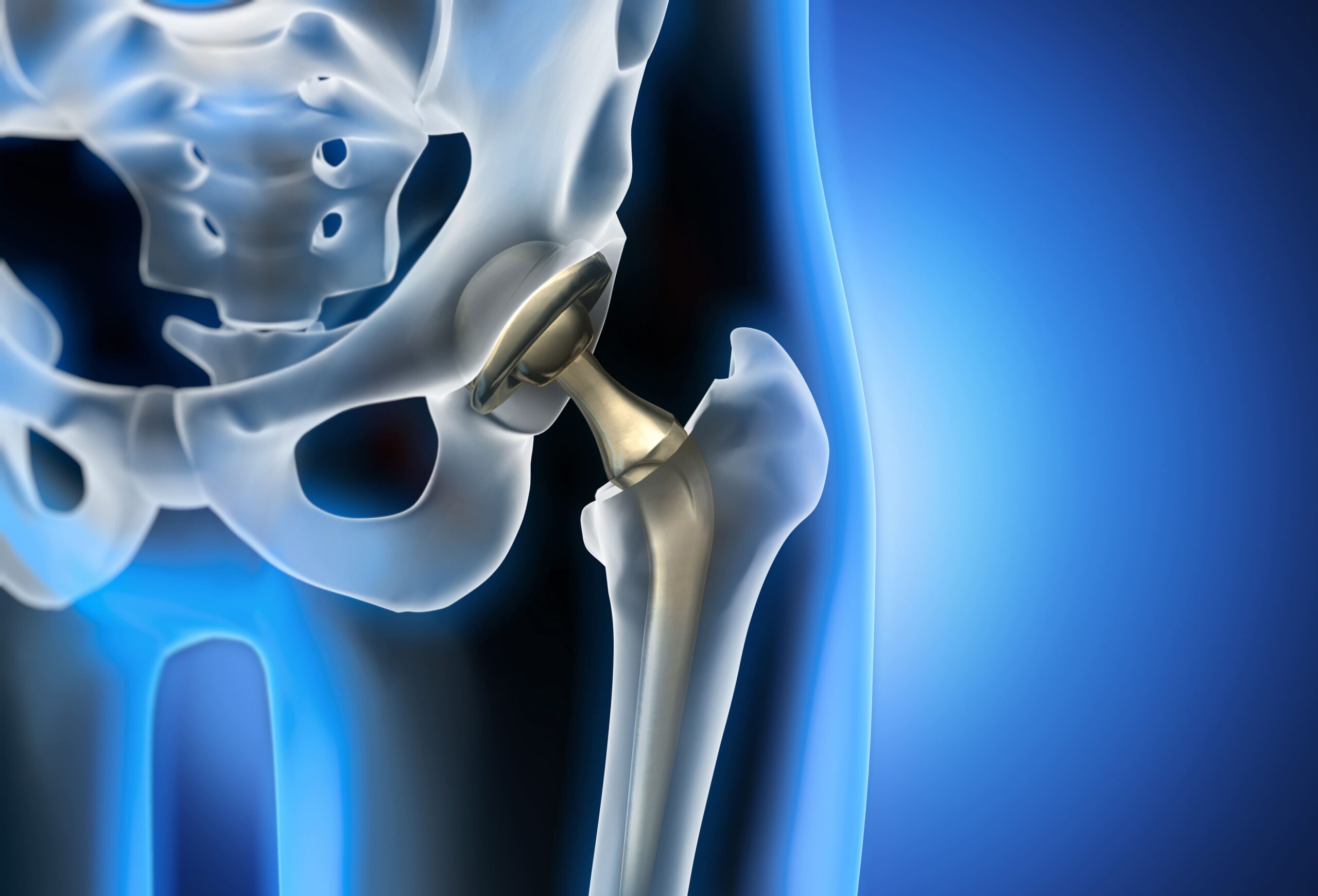Hip replacement is a highly successful procedure in orthopedic surgery units. How long is the hospital stay after the hip replacement? Dr. Vanni Strigelli helps us paint a complete picture.
Hip replacement is a widely performed surgical procedure with the highest success rate in orthopedic surgery departments in Italy.
A prestigious scientific journal, “The Lancet”, has dubbed total hip replacement as the surgery of the century, capable of resolving hip disability and pain.
One of the most common questions from patients is about the duration of post-surgery rehabilitation stay and the expected recovery times.
Nowadays, an increasing number of people turn to hip replacement to definitively address debilitating joint conditions, such as degenerative arthritis.
Dr. Vanni Strigelli helps us paint a comprehensive picture.
Let’s delve into the details with him:
- who needs prosthetic treatment?
- how is the surgery performed?
- what are the advantages of the latest generation prostheses?
- rehabilitation stay duration
1 – Who needs hip prosthetic surgery?
If the hip is damaged by arthritis, a fracture, or other conditions, daily activities like walking, driving, and climbing stairs become painful and complicated.
Due to stiffness even simple tasks such as dressing, putting on shoes or making love can become difficult.
Eventually the pain and discomfort may also interfere with rest and sleep.
If these symptoms persist – despite conservative treatments like medication, lifestyle changes, or the use of aids like canes or crutches – it’s time to consider hip prosthetic surgery in consultation with an orthopedic specialist.
It’s crucial to identify all risk factors and potential benefits of the surgery, considering the severity of the disease, the patient’s age and their psychophysical characteristics, as the basis for the decision.
The operation allows you to completely alleviate pain, improve mobility and return to normal daily activities.
It’s a safe and effective procedure that restores the quality of life using cutting-edge materials and techniques.
Indeed, with the latest smaller-sized prostheses made from advanced biocompatible materials, minimally invasive surgery can be performed, accelerating recovery times.
When do I recommend hip replacement surgery?
It’s not a poor X-ray that leads to surgery, but rather significant symptoms like pain and stiffness that impair the patient’s quality of life.
There are several reasons why I recommend hip replacement surgery:
- persistent pain that no longer responds to pain relief therapies;
- limited joint mobility;
- impairment of daily activities;
- significant difficulty rising from a seated position;
- difficulty sleeping both day and night due to constant pain;
- pain while walking;
- limited or no benefit from conservative treatments;
- The surgery alleviates pain and stiffness, improving the patient’s quality of life and autonomy; everyone can recover with a hip replacement.
Having an effective solution like surgery means having the opportunity to fully enjoy your days again and resume walking without pain.
Read this article for more in-depth information.
2 – How is the surgery performed?
The prosthesis is customized and the choice depends on the patient’s characteristics, needs and sex.
For example, an 85-year-old woman weighing 60 kg will have different needs compared to a 52-year-old man weighing 85 kg.
The quality of the bone affects the choice of the implant; in young men with healthy bones small press-fit prostheses can be used, while in cases of severe osteoporosis it is more appropriate to use cement to secure the implant.
We all have different joint geometries that need to be studied and understood to choose the prosthesis model that best suits their reconstruction.
The prosthesis is composed of three elements:
- A ceramic head placed on a metal stem that replaces the damaged femoral head. The stems are usually made of titanium alloy or cobalt-chrome, materials that are among the strongest and most biocompatible on the market;
- An acetabular cup (or metal shell) that replaces the worn cartilage in the pelvis, generally made of a titanium alloy;
- An acetabular liner made of polyethylene (or sometimes ceramic).
The hip replacement surgery
The hip replacement surgery is planned based on a preoperative radiographic study using specific X-rays that allow the surgeon to determine the suitable prosthesis for the patient.
Before admission pre-hospitalization is conducted to assess the overall health status.
Spinal anesthesia is usually used for the procedure, during which the legs will be temporarily numbed for a few hours. Patients experiencing anxiety can request general anesthesia.
In addition to the small skin incision, minimally invasive techniques are characterized by the preservation of subcutaneous tissues such as tendons and muscles, which are spared during the surgery.
Traditionally hip surgery requires an incision of 20-30 centimeters and a healing period ranging from 3 to 4 months.
However, the new minimally invasive techniques allow for successful hip prostheses implantation through a smaller incision, approximately 10 cm, closed with glue, with bone sparing thanks to smaller prosthesis sizes, especially on the femur.
In hip replacement surgery the irreversibly damaged bone and cartilage are removed and replaced with prosthetic components securely attached to the bone.
The goal is to create a stable new joint.
How can the surgery be outlined?
The surgery, lasting approximately 45-60 minutes, can be outlined as follows:
- anesthesia;
- patient positioning on the operating table on their side;
- disinfection of the limb;
- skin incision;
- removal of worn-out bone and cartilage;
- placement of prosthetic components;
- closure of the skin with glue.
At the end an X-ray is performed to confirm the success of the surgery.
For further information, read this article.
3 – What are the advantages of the latest generation prostheses?
Today there are increasingly more hip replacement surgeries performed on young individuals and athletes who want to quickly return to an active lifestyle.
Thanks to the latest generation hip prostheses all of this is possible.
The advantages include faster recovery times, longer implant lifespan and reduced stress for the patient.
The ability to reduce the length of hospital stay is undoubtedly an important factor for reducing hospital costs.
The advancements in the surgery
There are three factors that have contributed to the progress of this procedure.
- Minimally invasive approaches to the hip joint: the modified posterolateral and anterior approaches allow access to the joint while reducing aggressiveness on soft tissues, tendons, and muscles, thus reducing bleeding, postoperative pain, and the risk of hip dislocation. They leave minimal scarring
- Innovation in prosthetic design: increasingly smaller and less invasive stems allow for smaller surgical accesses as well as significant bone preservation.
- Improved prosthetic materials: this is the most evident area of improvement to ensure the longevity of implants. The most commonly used coupling involves a ceramic femoral head – highly resistant to wear – with a polyethylene acetabular insert.
The average lifespan of a well-executed implant, in a patient with a correct lifestyle, exceeds 30 years.
There are several factors that affect its durability:
- trauma;
- weight;
- excessive stress;
- other specific complications.
Each type of prosthesis is excellent in terms of reliability and safety and has characteristics that make it ideal for the patient’s needs and the geometry of their hip.
That’s why every procedure is personalized to the patient.
Once the prosthesis is implanted stability is achieved, allowing the patient to bear weight on the operated joint from the first day after surgery. This is especially important for elderly individuals who need to start walking as soon as possible.
If you want to know all the advantages, also read this article.
4 – Recovery time in the rehabilitation centre
With the Rapid Recovery method adopted by Dr. Vanni Strigelli the recovery times are much faster compared to traditional surgery.
You can get up already after 5/6 hours from the surgery without a urinary catheter or stitches on the wound and with less bleeding and pain: all for a shorter recovery.
Typically, you return home between the third and fifth day post-operation, where you will continue to follow the physiotherapist’s instructions.
Post-operative rehabilitation primarily aims to:
- regain autonomy in daily activities;
- restore mobility to the joint and muscle tone;
- return to normal life peacefully.
When can you start rehabilitation after the surgery?
Immediately!
After hip replacement surgery rehabilitation and physiotherapy exercises are a fundamental part of the physical and psychological healing process.
The journey begins in the hospital room with the physiotherapist performing passive and assisted active mobilization of the joint area and teaching the first movements to be performed while the patient is still in bed.
During the first day the patient learns how to manage the ability to sit, roll to the side, get up and go to the bathroom, using aids correctly.
Once autonomy is achieved during postural movements and walking, treatment is continued in the gym based on the assessment made earlier.
Thus begins the Individualized Rehabilitation Program with the goal of resuming activities of daily living, reactivating musculature, and achieving the highest possible degree of joint mobility.
Avoiding sedentary behavior both before and after the prosthesis implant is crucial: the earlier the re-education to correct movements begins, the better the postoperative course and rehabilitation results.
Another key element is adopting a healthy lifestyle and a balanced diet to avoid weight gain and compromise the results of the surgery.
Before discharge a final physiotherapy evaluation is performed and a protocol of exercises to be performed continuously at home is provided.
Rehabilitation after prosthetic surgery lasts about 8 weeks with 15-20 outpatient sessions, although sometimes a lower number of meetings may be sufficient.
The duration of each individual postoperative rehabilitation session is about an hour; the exact time depends on the individualized rehabilitation program set up.
Which are the recovery times?
The recovery times vary depending on the patient’s clinical conditions.
In general the recovery times can be as follows:
- autonomy for postural transitions and movement – 5 days;
- autonomy for activities of daily living – 10/15 days depending on age, weight, pre-operative physical condition;
- walking without support – varies case by case from 10 days to 1 month;
- driving a car – from 2 weeks to 1 month if conditions allow for one’s own and others’ safety;
- returning to work – from 45 days to three months depending on the job;
- returning to “normalcy” – from 2 months to 6 months.
As an ultra-specialist hip surgeon Dr. Vanni Strigelli always pays great attention to technological innovations, which patients increasingly demand.
If you want more information about the rehabilitation stay after hip replacement surgery, I recommend contacting Dr. Vanni Strigelli directly through this page.


